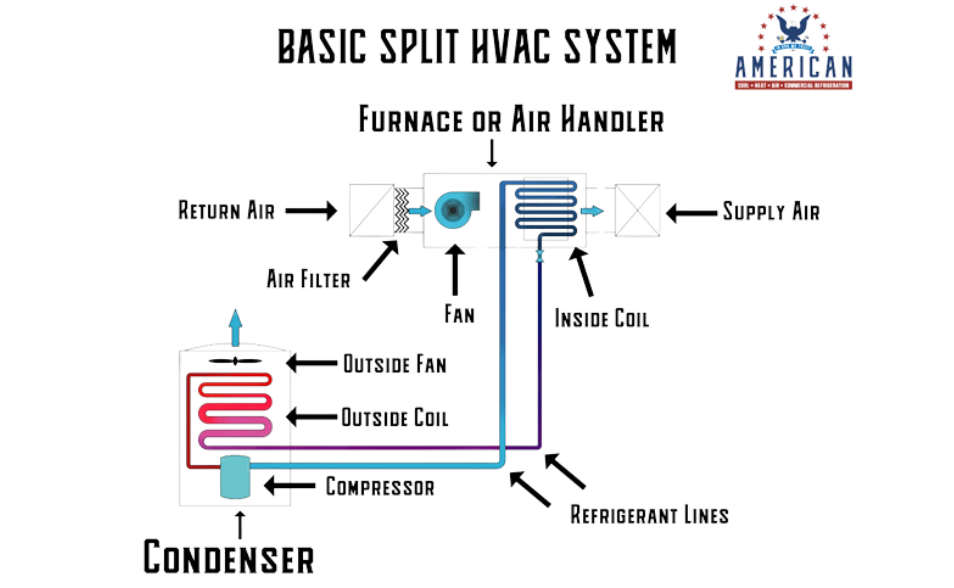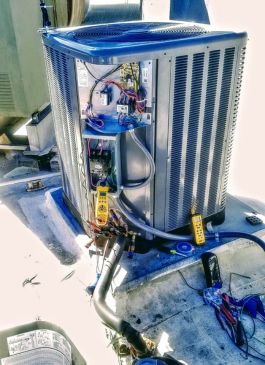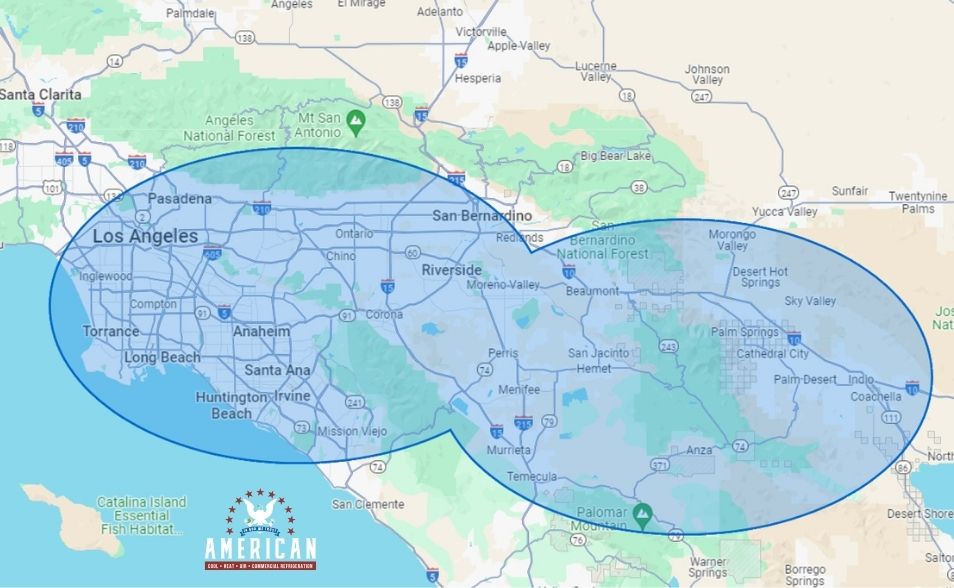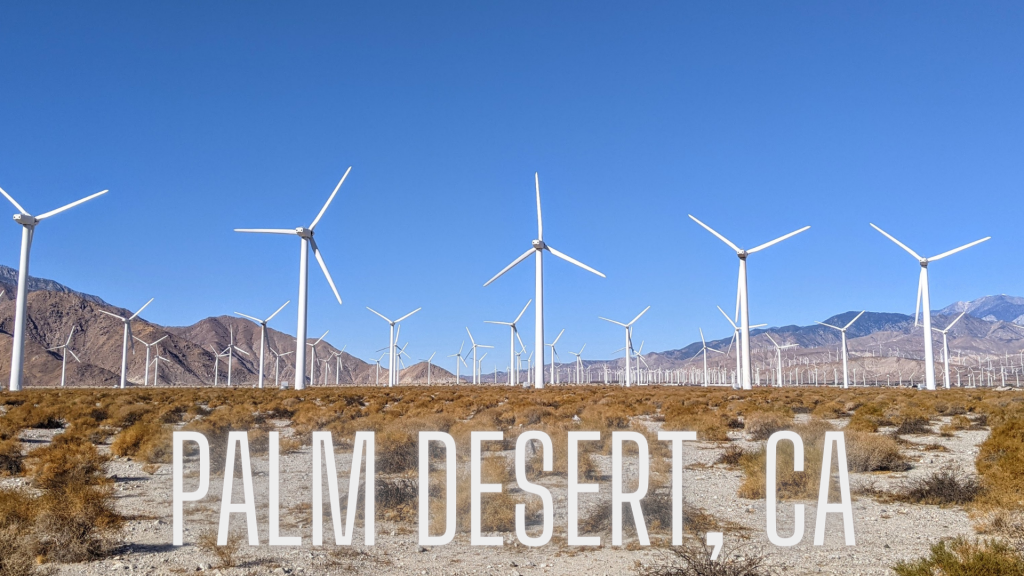Trusted Expertise In commnercial HVAC Solutions For Your Business
Commercial HVAC Systems
Optimize Your Commercial Space with Cutting-Edge HVAC Systems
HVAC is an acronym used in the contractors industry, meaning Heating, Ventilation, and Air Conditioning. HVAC systems are the backbone for creating comfortable, functional, and sanitary indoor environments within commercial properties. These systems are very complex but seen as simple units. These sophisticated systems work to regulate temperature, control humidity, and ensure proper air circulation within buildings.
The complete understanding of these systems is easier said than done! This field requires significant knowledge of Thermodynamic Laws, Load calculations, Math skills, Equipment selection, understanding of chemistry, component selection, Electrical, Electronics, Direct Digital Controls (DDC), Plumbing, Metal Fabricating, Properties of Air as a fluid, Water as a fluid, etc. The list goes on to design, build, retrofit, and fix HVAC systems, which we know how to do very well.
The involvement of these systems starts with the customers’ needs, whether a restaurant, commercial offices, Hospitality Hotels, pharmaceutical manufacturing, school, government building, supermarket, etc., that will determine the type of equipment required to control and achieve desired controlled conditioning weather Heating, ventilation, or air conditioning.
For commercial properties, the importance of a well-functioning HVAC system cannot be overstated. Beyond simply providing comfort, a properly designed and maintained HVAC system contributes significantly to the overall efficiency, productivity, and safety of the space. It ensures that occupants can work, shop, or conduct business in an environment that is conducive to their needs, leading to increased satisfaction and productivity.
Moreover, a well-maintained HVAC system plays a crucial role in energy efficiency and safety. Properly designed and maintained equipment efficiently heats, cools, and ventilates commercial spaces. Routine maintenance helps reduce energy consumption and associated costs by preventing equipment from overworking and experiencing excessive wear and tear. Additionally, well-maintained HVAC systems contribute to sustainability efforts by minimizing the carbon footprint of buildings and ensuring compliance with environmental regulations.
In summary, HVAC systems are essential for creating safe, comfortable, healthy, and energy-efficient indoor environments in commercial properties. Investing in the proper design tailored to your needs, installation, and routine maintenance of these systems is critical for businesses looking to optimize their operational reliability, efficiency, and provide an optimal environment for occupants.
KEY COMPONENTS OF HVAC SYSTEMS:
Heating systems consist of several integral components that work together to maintain indoor environments Temperature, Humidity and keep them Safe.
HEATING:
- The heating component of an HVAC system is responsible for generating heat to maintain comfortable temperatures during cold weather.
- Common HVAC heating systems include furnaces, air conditioners, mini split, roof top units and heat pumps.
- A furnaces can use propane, natural gas, or oil for combustion. Electric strips may also be used to produce heat for EMERGENCY HEAT.
- Heat pumps, simply put, can offer both heating and cooling to spaces by reversing the flow of refrigerant. This is a more specialized equipment as it requires more mechanical and electrical components to achieve this function.
VENTILATION:
- Ventilation is the most overlooked aspect when it comes to HVAC. It is crucial for ensuring proper air, air circulation and maintaining indoor air quality within commercial buildings.
- Ventilation systems do more than circulate air. Indoor air quality can be improved by bringing in fresh outdoor air to remove stale air, odors, and pollutants. This outdoor air that’s being introduced can be filtered and preconditioned for maximum air quality and efficiency.
- Components of ventilation systems include air ducts, exhaust fans, air filters, and air exchange units.
Air Ducts
Air ducts interconnect, Filtration systems, Air conditioning systems, and fresh air. To a good contracting company, they are sophisticated; they will deliver the “proper” amount of air, and depending on what that air contains or its location also plays a factor in the type of ductwork to be used, such as Galvanized, stainless steel, Flex duct, etc. If it’s high velocity or standard, taking everything into consideration, they may and more likely have valves to control the flow of the air either off, on, or partially open into different rooms with digital controls. You can start seeing how something that looks like a simple duct is actually more complex than it looks, and we can design a solid ductwork system to meet your needs.
Exhaust fans
Similar to the exhaust fans in your house located in the restrooms, exhaust fans in commercial buildings are used for removing fumes, stale air, cooking air, etc. The removal of air by exhaust fans MUST be calculated, as you can put the room or building into what’s called negative pressure, which would cause problems such as making it difficult to open doors to the building because you have to overcome that negative pressure. Additionally, allowing too much outside air in would create excessive dust buildup in the rooms or building, also increasing air conditioning run times as too much unconditioned air is being forced in, causing higher utility bills. It goes without saying that a good exhaust fan is selected AFTER the client’s needs are known. Then, we can do a calculation that tells us how many air changes per hour are required. Air changes refer to how many times the air in that room or building needs to be changed for new conditioned fresh air. If there are too few air changes and the exhaust fan’s air changes are too slow, then you could get increased Carbon Monoxide, which comes from burning fuels such as gas, propane, car exhaust, or Carbon Dioxide, which comes from people exhaling air. Too much of either can cause health problems such as headaches, nausea, or sickness depending on concentration levels. These levels can be found in gyms, enclosed buildings with large groups, offices, etc. Exhaust fans are important and MUST be calculated and designed correctly, something we can do. AC units have economizers which operate by opening and closing depending on Carbon Dioxide levels, as there is starting to be a mandate for the installation of such systems for the previously mentioned reasons.
HRV (Heat recovery ventilation), ERV (Energy recovery ventilation)
Heat recovery ventilation (HRV) and energy recovery ventilation (ERV) are important and similar. When you bring fresh air inside your building, it comes in with the moisture and temperature that are outside. For example, if you’re keeping your building at 75°F and the outside temperature is 100°F, that means you are bringing in fresh air from outside that is hotter than the air temperature you’re trying to maintain. This makes your AC work harder as it needs to cool that 100°F air down to 75°F, wasting energy. Here is where a Heat Recovery Ventilation system comes in. They have different efficiency levels, but they all work the same since you’re bringing air in, the building’s air has to come out also. An HRV system takes the 75°F cold air and transfers that temperature into the 100°F outside air that’s coming in. Not all of the 100°F air will come in at 75°F; once that energy is transferred, it will be somewhere around 80°F. But it’s much easier for an air conditioning system to cool down 80°F to 75°F than it would be to cool down 100°F all the way to 75°F, thus saving on energy bills. These units also need to be calculated for use, and that is something we can do. Now that you know how a heat recovery ventilation works, an Energy Recovery Ventilation does the same function but also transfers the moisture from the air. It’s usually used in more humid climates, while the Energy Recovery System is used in drier climates.
Humidifiers and De-humidifiers
A standard comfortable indoor air temperature in a building, on average, is roughly 75°F, with humidity ideally between 40% to 50%. A humidifier adds moisture to the air, while a dehumidifier removes it. It’s important to have a humidifier or dehumidifier system in place where humidity levels exceed 50% or fall below 40%, such as in hospitals, spas, or for specific applications like labs, or where a person has a medical condition. If it’s too dry, problems like itchy eyes, dry skin, respiratory problems, and drying out of wood can occur. Too much humidity can lead to sweating, mold growth, bacteria and virus growth, among other issues. Other places and items that require special humidity control include meat markets, fish displays, vegetables, and places with large pools such as schools, YMCA’s, and grow houses.
For proper design of humidity control systems, contact us.
Air Filters (this is usually the most restrictive part in the air side of an HVAC system)
Your air conditioning system is NOT designed from the factory to be an Air Filtration System. It’s designed to cool, heat, and dehumidify the air, not filter it. The purpose of a filter from the factory is to filter dirt and other larger particles out from clinging into the Evaporator coil, which is the part that gets cold and cools your air. However, you CAN design a duct system that CAN handle a more restrictive type of air filter that will stop small particles from circulating around your building. Air Filters & Air Filter Systems are not well understood by the general public. MOST AC SYSTEMS DO NOT deliver their rated capacity. In other words, a 5 TON system usually doesn’t deliver its Rated 5 TON capacity into the building, especially if the system has too much of a restrictive air filter, among other factors such as return or supply ductwork being too small, ductwork air leakage not making it into the conditioned space, etc., causing high amounts of wasted energy bills. The type of filter to be used for the client’s needs needs to be designed and calculated so that there is enough surface area where air can get through and not stop airflow, allowing the air conditioning system to deliver its RATED air capacity by the manufacturer. It’s sort of like putting a partial board over your car’s intake air and stalling it. The more pollutants that filter is able to stop, the more weaves there are to that filter, the smaller the micro holes are in that filter, the less the air can get by. The more that board is closing that car air intake until that car can no longer deliver its Manufacturer-rated horsepower. The same goes for AC systems; the more restrictive, the less they are able to deliver the AC rated Tonnage capacity. We can calculate & design a good filtration system, whether it’s HEPA rated, and you’re trying to clean or purify the air; we can do it.
AIR CONDITIONING:
- Air conditioning systems are responsible for conditioning the indoor air and can also be used to control humidity.
- These systems use refrigeration cycles and an indoor coil which absorbs heat from indoor air and an outdoor coil to release that heat to the outdoors, resulting in cooler temperatures inside.
- Commercial air conditioning systems can also be used to regulate humidity levels to maintain optimal comfort and prevent moisture-related issues, or should your business needs require a specific humidity level for sensitive equipment, or products. Examples include Data Centers, Pharmaceutical industry, hospitals and health care buildings,textile manufacturing, and printing industry just to name a few.
- Common commercial air conditioning systems include:
– Package units (also known as Rooftop units)
– Split Air Conditioning systems
– Ductless Split systems (also known as Ductless mini-split)
– VRF Systems (Variable Refrigerant Flow)


READY TO OPTIMIZE YOUR COMMERCIAL HVAC SYSTEMS FOR PEAK PERFORMANCE AND EFFICIENCY?
TYPES OF COMMERCIAL HVAC SYSTEMS:
Commercial properties require efficient and reliable HVAC systems tailored to their specific needs. Several types of HVAC systems are commonly used in commercial settings, each offering unique advantages and suitability for different building types or sizes.
AIR CONDITIONING SYSTEMS:

Air Cooled Air Conditioners:
- Air cooled air conditioners are the most commonly used type of system. This system uses air as a heat exchange medium for the outdoor coil to remove the heat that was absorbed from indoor spaces.
- They are suitable for most buildings, and buildings where water availability or infrastructure is limited by law, or some other limitation is present

Water Cooled Air Conditioners:
- Water cooled air conditioners utilize water as a heat exchange medium to remove the heat that was absorbed from indoor spaces.
- These systems are ideal for buildings with ample water availability and where air cooled systems are not practical

Chiller Systems (Water Cooled):
- Water cooled chiller systems moves chilled water throughout the building to the indoor air handler which absorbs heat from the conditioned space and releases the heat outside by use of cooling towers.
- They are commonly used in large commercial buildings and industrial facilities. However, though less common, water cooled chiller systems can be found in all sizes and can even be used for small specific applications.

Chiller Systems (Air Cooled):
- Air cooled chiller systems operate similarly to water cooled chiller systems as they send chilled water throughout the building to the indoor air handler which absorbs heat from the conditioned space and releases the heat outside by use an outdoor coil and use fans to force air through the coil to release the heat to the outside.
- They are suitable for buildings where space is a concern, or water availability or infrastructure is limited, but still require the benefits of a chiller system.

Cooling Towers:
- Cooling towers are heat rejection devices that transfer heat from a building’s HVAC system to the atmosphere.
- They are often used in conjunction with chiller systems to dissipate heat generated during the cooling process

Split Air Conditioning and Heat Pump:
- Split air conditioning systems consist of separate indoor and outdoor units connected by refrigerant lines.
- They provide both cooling and heating capabilities by use of a furnace or heat pump, making them versatile options for commercial buildings.

Packaged Rooftop Units (RTUs):
- Packaged rooftop units contain all HVAC components within a single unit installed on the roof of a building.
- They are space-saving solutions suitable for commercial buildings with limited indoor space.

Water Source Heat Pumps (WSHP):
- Water source heat pumps utilize water as a heat exchange medium to remove heat from the coil to the water.
- As a heat pump they have the capability to provide both heating and cooling for buildings.
- They are energy-efficient options that can significantly reduce operating costs and these units can be 50 – 75% smaller than their air cooled counterparts.

Ductless Split Air Conditioners (Mini-Split):
- Ductless split air conditioners consist of separate indoor and outdoor units connected by refrigerant lines, eliminating the need for ductwork.
- They are ideal for retrofitting older buildings or for spaces where traditional ducted systems are impractical.

VRF and VRV Systems:
- Variable Refrigerant Flow (VRF) and Variable Refrigerant Volume (VRV) systems provide precise control over refrigerant flow to individual indoor units.
- They offer zoning capabilities and energy-efficient operation, making them ideal for buildings with varying heating and cooling needs.
CONTACT THE DELTA FORCE OF THE DESERT
Heating Systems:

Heat Pumps (AIR COOLED):
- Air cooled heat pumps reverse the flow of refrigerant, making the indoor coil provide heat when in heating mode.
- They provide efficient heating in moderate climates and are often used in conjunction with air conditioning systems for year-round comfort.

Water Source Heat Pumps (WSHP):
- Water source heat pumps utilize water as a heat exchange medium to provide heating for buildings.
- They offer high efficiency and can be used in various applications, including commercial buildings, schools, and hospitals.

Gas Furnace:
- Gas furnaces use natural gas or propane as a fuel source to generate heat for buildings.
- They are common in areas with access to natural gas infrastructure and provide reliable and cost-effective heating.
CONTACT THE DELTA FORCE OF THE DESERT
VENTILATION & DUCTWORK SYSTEMS:

Ventilation:
- Ventilation systems are responsible for exchanging indoor air with outdoor air to maintain indoor air quality and regulate moisture levels.
- They remove stale air, odors, and pollutants while introducing fresh outdoor air to create a healthier and more comfortable indoor environment.
- Ventilation systems can include exhaust fans, intake vents, and air exchange units to facilitate proper airflow throughout the building.

Ductwork:
- Ductwork refers to the network of ducts used to distribute heated or cooled air throughout a building.
- It is often the most overlooked aspect in HVAC, it plays a crucial role in the efficiency and effectiveness of HVAC systems by ensuring that conditioned air reaches all areas of the building with the least resistance as possible.
- Properly designed and installed ductwork minimizes air leakage and maximizes airflow, optimizing the performance of heating, ventilation, and air conditioning systems.
- Improperly designed ductwork can not only restrict the movement of air and cause rooms to be uncomfortable, but can also cause excessive energy consumption, wear and tear on the HVAC system, and in some cases total failure.
CONTACT THE DELTA FORCE OF THE DESERT
AIR PURIFICATION, AIR CLEANER, AND AIR QUALITY TESTING:

Air Purification:
- Air purification systems utilize advanced filtration or purification technologies to remove contaminants, allergens, and pollutants from indoor air.
- These systems help improve indoor air quality by capturing particles such as dust, pollen, mold spores, and volatile organic compounds (VOCs) or exposing to a high UV light source.
- Air purification systems can include HEPA filters, UV germicidal lamps, activated carbon filters, and ionizers to effectively clean and sanitize the air.
- Air Purification usually requires additional design and modification to achieve. Simply installing a better filter will reduce the amount of airborne contaminants, but if the ductwork or equipment is not designed for the additional restrictive air filter, can cause more harm than good at the expense of the HVAC equipment.

Air Cleaner (HEPA vs Standard):
- Air cleaners are devices designed to prevent the indoor coil from getting clogged with dust and anything that might get sucked up by the return. It can also be used to remove particles and pollutants from indoor air, improving air quality and reducing respiratory irritants.
- HEPA (High Efficiency Particulate Air) filters are highly efficient filters capable of capturing particles as small as 0.3 microns with a high degree of efficiency.
- Standard air cleaners may use other filtration methods such as electrostatic precipitators or activated carbon filters, which may be less effective than HEPA filters for capturing fine particles.

Testing the Air Quality:
- Air quality testing involves assessing indoor air quality to identify potential pollutants, allergens, or contaminants present in the air.
- Testing may include measuring levels of particulate matter, volatile organic compounds (VOCs), carbon dioxide, humidity, and other air quality indicators.
- By conducting air quality testing, businesses can identify potential issues and implement targeted solutions to improve indoor air quality and create a healthier environment for occupants.
Understanding the differences between these types of commercial HVAC systems is essential for selecting the most suitable option for a specific building type, size, and usage requirements. Our HVAC professionals can help you determine the best system for optimizing comfort, energy efficiency, and overall performance.
BENEFITS OF UPGRADING OR INSTALLING COMMERCIAL HVAC SYSTEMS:
Upgrading or installing new HVAC systems in commercial properties offers a myriad of benefits that contribute to improved comfort, efficiency, and overall building performance.
Improved Energy Efficiency:
- Modern HVAC systems are designed to operate more efficiently, reducing energy consumption and lowering utility costs.
- Upgrading to energy-efficient equipment, such as high-efficiency furnaces or variable-speed air conditioners, can significantly decrease energy usage and carbon emissions.
- Reduced energy consumption translates to lower operating expenses, allowing businesses to allocate resources more effectively and increase profitability.
Enhanced Indoor Air Quality:
- Advanced HVAC systems incorporate filtration and ventilation technologies to improve indoor air quality by removing pollutants, allergens, and contaminants.
- Properly ventilated and filtered indoor environments contribute to healthier and more productive occupants, reducing absenteeism and improving overall well-being.
Cost Savings on Utility Bills:
- Upgrading to energy-efficient HVAC systems can lead to substantial cost savings on utility bills over time.
- Reduced energy consumption translates to lower operating expenses, allowing businesses to allocate resources more effectively and increase profitability.
Compliance with Environmental Regulations:
- New HVAC systems often adhere to stringent environmental regulations and standards, minimizing environmental impact and ensuring compliance with local and federal laws.
- By investing in environmentally friendly HVAC solutions, businesses demonstrate their commitment to sustainability and corporate responsibility.
Increased Property Value:
- Upgrading or installing modern HVAC systems can enhance the value of commercial properties by improving comfort, efficiency, and appeal to potential buyers or tenants.
- Energy-efficient features and advanced technologies may also attract environmentally conscious investors and tenants seeking sustainable building solutions.
SCHEDULE YOUR CONSULTATION TODAY AND LET’S DISCUSS YOUR HVAC & REFRIGERATION NEEDS!
When you select a time and date for your appointment, we’ll give you a call to verify the appointment or reschedule if the selected time is not available.
OUR SERVICES:
At americancoolheatair, we pride ourselves on offering comprehensive HVAC solutions tailored to the unique needs of our commercial clients. With our extensive experience and commitment to excellence, we provide a wide range of services to ensure optimal comfort, efficiency, and reliability of your HVAC systems.
COMMERCIAL HVAC INSTALLATION
At our company, we understand that every business is unique, which is why we tailor our HVAC installations to meet your specific needs. Whether you’re setting up a new system or upgrading an existing one, our goal is to provide you with a solution that maximizes comfort and efficiency. We take the time to assess your space and customize our approach to ensure optimal performance. With the latest technology and smart thermostats, you’ll have greater control over your HVAC system, even from remote locations. Trust us to design and install a system that’s perfect for your business, delivering comfort, energy savings, and peace of mind.
COMMERCIAL HVAC REPAIRS
When commercial HVAC systems encounter issues, prompt and reliable repairs are crucial to minimize disruptions to business operations. Our team of experienced technicians specializes in providing dependable commercial HVAC repair services tailored to meet specific needs. We prioritize timely responses and efficient solutions, with thorough diagnostics and expert troubleshooting to quickly identify the root cause of problems. Count on us for high-quality repairs with minimal downtime, ensuring smooth business operations.
COMMERCIAL HVAC MAINTENANCE
Our approach to commercial HVAC maintenance is all about personalized service, energy efficiency, and equipment longevity. We provide tailored maintenance plans designed to optimize system performance and extend the lifespan of your equipment. Our experienced technicians conduct thorough assessments to identify potential issues early, reducing the risk of breakdowns and repair costs. By maintaining your equipment regularly, you can enjoy better energy efficiency and fewer disruptions to your business operations.
EXPERTISE IN COMMERCIAL HVAC:
- With years of experience serving commercial clients across California (greater Los Angeles), we understand the unique challenges and requirements of commercial HVAC systems.
- Our team possesses the knowledge, skills, and resources to address the complex needs of commercial properties, from office buildings and retail spaces to industrial facilities and hospitality establishments.
- Whether you require a new HVAC installation, routine maintenance, or emergency repairs, you can trust us to deliver professional and reliable service every time.
Choosing the Right HVAC Contractor
When selecting an HVAC contractor for your commercial needs in Los Angeles, its surrounding areas & Coachella Valley, it’s crucial to consider both certifications and experience to ensure the highest standards of service and expertise.
Certifications and Experience
Our team holds certifications and licenses that affirm our commitment to excellence in HVAC services:

NATIONAL COMFORT INSTITUTE
Duct system optimization specialist
cert# 18-306-03
Air balancing residential
cert# 18-311-02
System performance commercial
cert# 19-002-09
Certified economizer specialist
cert# 19-003-04
Carbon monoxide and combustion analyzation
cert# 19-106-07

ESCO INSTITUTE UNIVERSAL EPA
Cert#673749454020

CONTRACTOR STATE LICENSE BOARD
License: C20 & C38 #1031858
Why Choose Us for Your HVAC needs?
Choosing American Cool Heat Air & Commercial Refrigeration means opting for a contractor whose qualifications go beyond the basic requirements. Our extensive certifications and profound experience allow us to tackle any HVAC challenge with precision and professionalism. We have a proven track record of successful installations and maintenance services in commercial settings, ensuring that our clients receive the most reliable and efficient HVAC solutions available. Trust us to enhance the comfort and energy efficiency of your business environment.
By choosing us, you benefit from a partner that not only understands the technical requirements of commercial HVAC systems but also values safety and energy efficiency.
CONTACT THE DELTA FORCE OF THE DESERT
Contact us today to discuss your HVAC needs and how we can bring our certified expertise to your project.
CUSTOMER REVIEWS










EXTENSIVE SERVICE COVERAGE FOR COMMERCIAL HVAC & REFRIGERATION SOLUTIONS
No Commercial HVAC or Refrigeration job is too small or too far for us. While our primary branches are located in Palm Desert and Rancho Cucamonga, California, we’re dedicated to reaching customers wherever they are in need.
Proudly serving cities across California, including Indio, La Quinta, Indian Wells, Bermuda Dunes, Thousand Palms, Cathedral City, Rancho Mirage, Santa Ana, Fontana, Moreno Valley, Glendale, Ontario, Garden Grove, Palm Desert, Irvine, Anaheim, Riverside, Palm Springs, and extending to Los Angeles and beyond. Your satisfaction is our priority, no matter the distance or scale of the project.

YOUR QUESTIONS ANSWERED
What type of HVAC system is best suited for my commercial property?
How can I improve the energy efficiency of my commercial HVAC system?
What maintenance tasks are essential for ensuring the longevity of my HVAC system?
How can I improve indoor air quality in my commercial building?
What are the benefits of upgrading to a newer HVAC system for my commercial property?
AMERICAN COOL HEAT AIR BRANCHES

PALM DESERT, CA
77564 Country Club Dr. #142,
Palm Desert, CA, 92211

RANCHO CUCAMONGA, CA
11175 Azusa Court, Suite 110,
Rancho Cucamonga, CA 91730